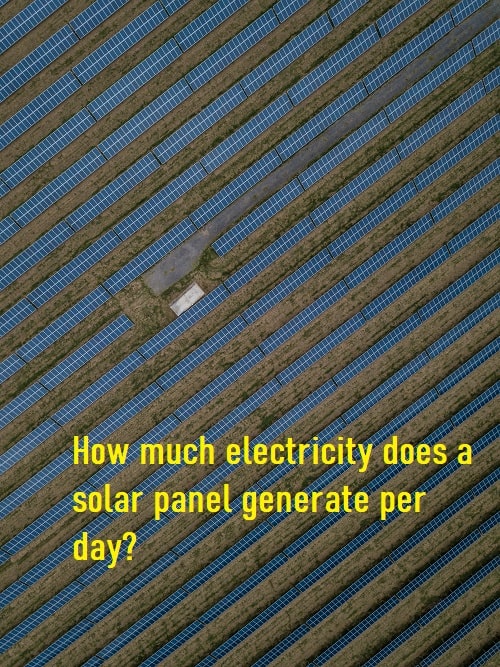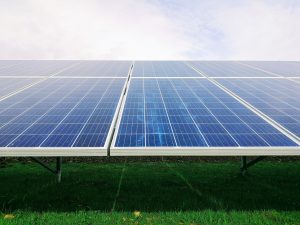The Victorian government have announced a new scheme to help increase small business commercial solar in Victoria – with two different rebates currently available. Let’s take a look at what your company should do if you’re thinking about installing – you can get a rebate of up to $3,500 to help pay it off!
Commercial Solar in Victoria – Solar for Business rebate

According to the Victorian government website, from May 2021 eligible small businesses in Victoria can apply for the Solar for Business Program rebate. The rebate offer includes up to 50% or $3,500 (whichever amounts to less) on eligible solar power systems.
The program is eligible to quite a lot of small businesses, here’s the skinny on the details if you want to apply:
You must:
- Be the owner of a business which has less than 20 employees
- Operate from premises that are not considered residential
- Operate from premises that are individually metered
- Have your system installed by a Solar Victoria approved solar retailer (click for a search) as detailed on Solar Victoria’s website
- Install a solar system with a PV capacity size up to a maximum of 30kW, as detailed on the Solar Victoria approved product list
Solar for business has been a no brainer for quite a while now, so with rebates like this being offered there’s never been a better time to consider installing renewable energy at your small business. If your bills are in the thousands per month you will save money installing solar. To also enjoy a rebate from the government is a very nice sweetener indeed – hopefully we see the scheme being taken up and similar rebates in other states implemented.
To register your interest please click here.
Small Business Energy Saver Program in Victoria
The Small Business Energy Saver Program is another option – providing generous bonuses of up to $2,000 for companies who upgrade to more energy-efficient equipment, such as air-conditioning, refrigeration, and heating pumps. 15,000 solar rebates will be available under the program – these will be doled out over the next three years.
(Very) rough solar installation costs – commercial solar in Victoria
Generally you can budget around $1000 per kilowatt (a little over a dollar a watt) of power on your system (after STCs), e.g. a 50kW system will be around $50,000 (closer to $65k in WA, if you’re thinking about a place to set up commercial solar…). This is obviously very, very rough and you’ll pay a bit more per watt for a smaller system (e.g. 10-30kW) rather than up to 100kW, so don’t quote me on these prices. Please note that the Solar for Business rebate only covers systems to a max of 30kW!
If you do want some help with getting a price guide for commercial solar installation or you’d like someone to go over some quotations with please email us and we’d be happy to help.
You can also get help with some rough savings numbers by using the solar calculator at the Queensland government website.
Registered accredited providers
The Victorian website has an up to date list of accredited providers for the scheme, but if you’re interested in installing commercial solar in Victoria and taking party in the rebate scheme, here’s a list current as per 12.04.21:
Barwon South West
Energy Makeovers
Replace inefficient electric hot water systems
Replace inefficient gas hot water systems
Upgrade to efficient room reverse cycle air-conditioners
Install energy efficient refrigeration and ventilation fans and motors
Install energy efficient refrigerator display cabinets
1300 788 776
[email protected]
Expert Group
Peter Brodribb
Install energy efficient refrigerator display cabinets
03 9592 9111
[email protected]
LED Saves
Rob Reyes
Replace inefficient electric hot water systems
Replace inefficient gas hot water systems
03 9088 0285
[email protected]
Gippsland
Energy Makeovers
Replace inefficient electric hot water systems
Replace inefficient gas hot water systems
Upgrade to efficient room reverse cycle air-conditioners
Install energy efficient refrigeration and ventilation fans and motors
Install energy efficient refrigerator display cabinets
1300 788 776
[email protected]
Expert Group
Peter Brodribb
Install energy efficient refrigerator display cabinets
03 9592 9111
[email protected]
Homelab
Mr Jack Labno
Replace inefficient electric hot water systems
Replace inefficient gas hot water systems
Upgrade to efficient room reverse cycle air-conditioners
Install energy efficient refrigerator display cabinets
Install energy efficient fridges and freezers
Install energy efficient refrigeration and ventilation fans and motors
Install water efficient pre-rinse spray valves.
1300 781 614
[email protected]
LED Saves
Rob Reyes
Replace inefficient electric hot water systems
Replace inefficient gas hot water systems
03 9088 0285
[email protected]
Wattly
Patrick Blain
Replace inefficient electric hot water systems
Replace inefficient gas hot water systems
Install energy efficient refrigerator display cabinets
1300 878 500
[email protected]
Grampians
Energy Makeovers
Replace inefficient electric hot water systems
Replace inefficient gas hot water systems
Upgrade to efficient room reverse cycle air-conditioners
Install energy efficient refrigeration and ventilation fans and motors
Install energy efficient refrigerator display cabinets
1300 788 776
[email protected]
Expert Group
Peter Brodribb
Install energy efficient refrigerator display cabinets
03 9592 9111
[email protected]
Homelab
Mr Jack Labno
Replace inefficient electric hot water systems
Replace inefficient gas hot water systems
Upgrade to efficient room reverse cycle air-conditioners
Install energy efficient refrigerator display cabinets
Install energy efficient fridges and freezers
Install energy efficient refrigeration and ventilation fans and motors
Install water efficient pre-rinse spray valves.
1300 781 614
[email protected]
LED Saves
Rob Reyes
Replace inefficient electric hot water systems
Replace inefficient gas hot water systems
03 9088 0285
[email protected]
Hume
Expert Group
Peter Brodribb
Install energy efficient refrigerator display cabinets
03 9592 9111
[email protected]
Homelab
Mr Jack Labno
Replace inefficient electric hot water systems
Replace inefficient gas hot water systems
Upgrade to efficient room reverse cycle air-conditioners
Install energy efficient refrigerator display cabinets
Install energy efficient fridges and freezers
Install energy efficient refrigeration and ventilation fans and motors
Install water efficient pre-rinse spray valves.
1300 781 614
[email protected]
LED Saves
Rob Reyes
Replace inefficient electric hot water systems
Replace inefficient gas hot water systems
03 9088 0285
[email protected]
Wattly
Patrick Blain
Replace inefficient electric hot water systems
Replace inefficient gas hot water systems
Install energy efficient refrigerator display cabinets
1300 878 500
[email protected]
Loddon Mallee
Energy Makeovers
Replace inefficient electric hot water systems
Replace inefficient gas hot water systems
Upgrade to efficient room reverse cycle air-conditioners
Install energy efficient refrigeration and ventilation fans and motors
Install energy efficient refrigerator display cabinets
1300 788 776
[email protected]
Expert Group
Peter Brodribb
Install energy efficient refrigerator display cabinets
03 9592 9111
[email protected]
Homelab
Mr Jack Labno
Replace inefficient electric hot water systems
Replace inefficient gas hot water systems
Upgrade to efficient room reverse cycle air-conditioners
Install energy efficient refrigerator display cabinets
Install energy efficient fridges and freezers
Install energy efficient refrigeration and ventilation fans and motors
Install water efficient pre-rinse spray valves.
1300 781 614
[email protected]
LED Saves
Rob Reyes
Replace inefficient electric hot water systems
Replace inefficient gas hot water systems
03 9088 0285
[email protected]




